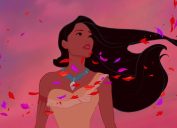39 Thanksgiving Facts to Share With Your Family
From how much turkey we eat to the origins of the first Thanksgiving, you'll eat this trivia right up.
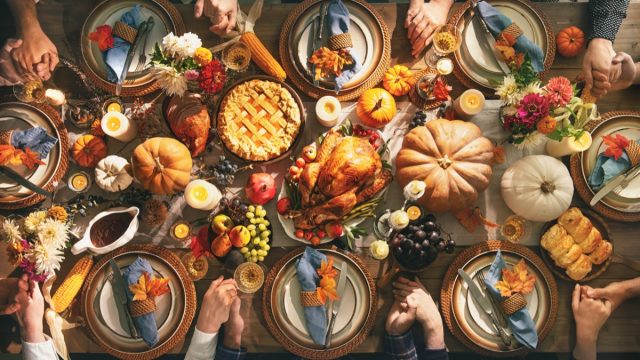
Thanksgiving is a special holiday for many popular reasons—the food, the family, and the football are just a few. Less well known, however, are the many fascinating facts behind the holiday's history, traditions, and myths. The truth is, for many of us, there's a lot we don't know about the holiday we celebrate every fourth Thursday in November. So before carving up your family's turkey this year, take the time to learn some of the most interesting Thanksgiving facts we could find. At the very least, you'll have some fun (and non-controversial) dinner conversation to contribute.
RELATED: 55 Amazing Fall Facts That Will Make You So Excited for the Season.
Fun Facts About Thanksgiving
1. The day after Thanksgiving is the busiest day of the year for plumbers.

Black Friday isn't just big business for retailers: Plumbers and drain cleaners get in on the action, too. According to Roto-Rooter, the day after we celebrate Thanksgiving is the busiest day of the year for those who keep water flowing and going in homes and businesses. In related news, they also recommend not pouring cooking oil down your drain.
2. Americans eat 704 million pounds of turkey every Thanksgiving.

According to the National Turkey Federation, around 44 million turkeys were served at Thanksgiving in the United States in 2017. That's compared to 22 million pounds at Christmas and 19 million at Easter. The average weight of each, meanwhile, was 16 pounds, which means we're gobbling up 704 million pounds of turkey across the country.
3. The Butterball hotline answers 100,000 turkey-related questions every year.

Butterball, a popular turkey company, opens a turkey hotline each November and December to answer any turkey-related questions you may have. Founded in 1981, the Turkey Talk Line went from receiving a modest 11,000 questions that first year to answering more than 100,000 questions across the U.S. and Canada every holiday season.
4. Calvin Coolidge was given a live raccoon one Thanksgiving.
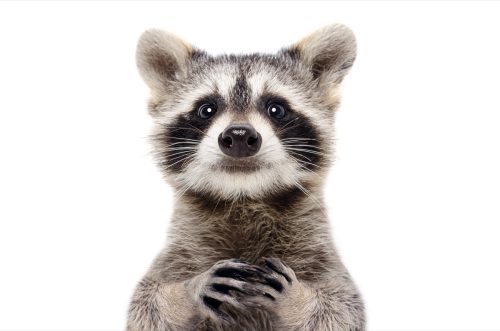
In 1926, President Calvin Coolidge was gifted a live raccoon, which was intended to be on the table instead of a turkey for the First Family's Thanksgiving meal. He and First Lady Grace Coolidge weren't inclined to eat the masked creature, however. Instead, they adopted the raccoon, gave her the name Rebecca, and kept her as a White House pet.
5. Native Americans had many uses for the cranberry.

Long before homemade and canned cranberry sauce became a traditional Thanksgiving meal, indigenous Americans had many other uses for the small red fruit. Not only did they eat cranberries fresh and use them as an ingredient in other foods, but native communities also used cranberries to heal wounds and dye fabrics.
RELATED: 35 Halloween Facts to Make the Season Even Spookier.
6. But cranberry sauce is the most hated Thanksgiving dish.

Apparently, being both versatile and delicious and multifunctional doesn't get very far. According to a 2022 survey by The Vacationer, cranberry sauce ranks as the least popular Thanksgiving food on the table.
7. Female turkeys don't gobble.
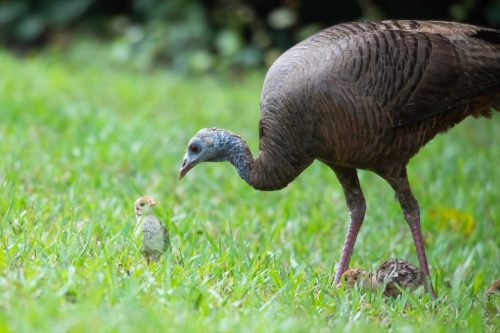
You probably associate turkeys with a "gobble" sound, but only male turkeys actually emit that call—which is why they're known as gobblers. Females and males cackle, purr, and yelp, depending on the situation.
8. Frozen had the biggest Thanksgiving opening of any movie.
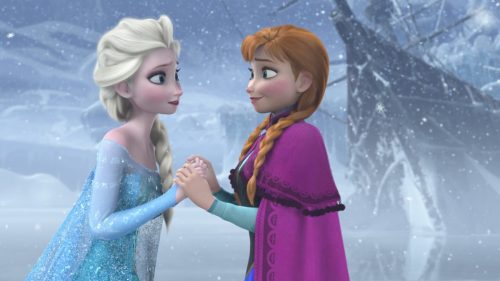
Thanksgiving is a big weekend for movie releases, especially flicks the whole family can go out and enjoy together. As of today, the 2013 Disney animated musical Frozen is the No. 1 Thanksgiving release of all time, pulling in $93 million domestically.
9. "Jingle Bells" was originally a Thanksgiving song.

"Jingle Bells," the classic Christmas song written by James Lord Pierpont in 1857, wasn't meant to be about Christmas. Originally titled "One Horse Open Sleigh," the ditty was meant to be sung on Thanksgiving. When it was reprinted in 1859, however, the name was changed to "Jingle Bells, or the One Horse Open Sleigh," and was prescribed for Christmas.
10. FDR once moved Thanksgiving up a week.
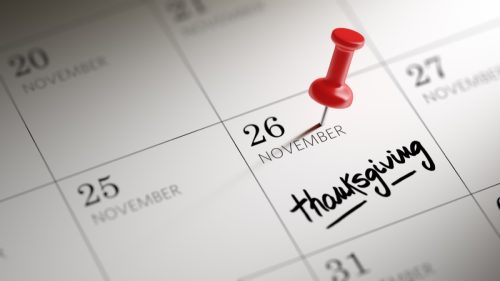
In the midst of the Great Depression, President Franklin D. Roosevelt moved Thanksgiving up one week to allow more time for shopping before Christmas. Otherwise, it would have fallen on Nov. 30. The move sparked intense public reaction, though none as memorable as the stunt pulled by Atlantic City's then-mayor, C.D. White. In a public statement issued the day before the new Thanksgiving as designated by Roosevelt, White announced that his city would celebrate two days of thanks and that the earlier date would be known as "Franksgiving."
11. The first Thanksgiving celebration lasted three days.

The event commonly referred to as the first Thanksgiving was celebrated in October 1621. It was organized by Governor William Bradford of Plymouth, Massachusetts, to celebrate the recent immigrants' first successful corn harvest in the New World. While the meal lacked much of what is now common Thanksgiving fare—there's no record of turkey being served, for example—there were at least five deer carcasses present, and the event lasted a full three days.
RELATED: 13 Bizarre Facts About Friday the 13th You Never Knew.
12. The woman who got Thanksgiving reinstated as a national holiday also wrote "Mary Had a Little Lamb."

Sarah Hale is known as the "Mother of Thanksgiving" because, at a time when the holiday was only celebrated in the Northeast, she spent four decades campaigning for a national day of thanks. In 1863, she finally persuaded then-President Abraham Lincoln to reinstate the holiday nationwide. In addition, Hale was also a successful editor and poet, penning the famous "Mary Had a Little Lamb" and retiring at the ripe age of 90.
13. George H.W. Bush's presidential "pardon" of a turkey was a joke of sorts.
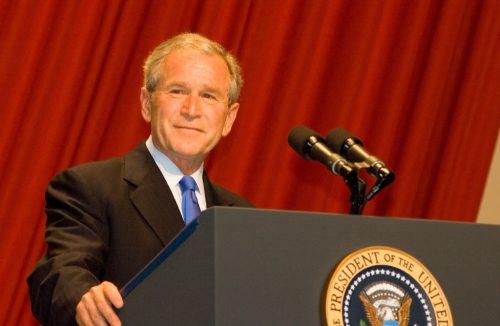
The tradition of U.S. presidents receiving turkeys as gifts can be traced back to the 1870s, but it was Harry S. Truman who became the first to receive one from the Poultry and Egg National Board and the National Turkey Federation in 1947. It was intended, perhaps, as a peace offering by the poultry industry after egg growers sent crates of live chickens to the White House labeled "Hens for Harry," an act of protest against the president's short-lived encouragement of "poultry-less Thursdays." And though the Truman Library & Museum disputes that he was the first to "pardon" a presidential turkey, a murky tradition of presidents receiving—but not eating—turkeys began. It continued under the administrations of Kennedy, Nixon, Carter, and Reagan.
In 1989, following this tradition, the first official turkey "pardon" was granted by George H.W. Bush. With animal rights activists standing nearby, the president quipped that "this fine tom turkey…will not end up on anyone's dinner table, not this guy—he's granted a presidential pardon as of right now." The rest, as they say, is history.
14. But pardoned turkeys live great lives.

Once these birds get their pardon, they are typically brought to the Frying Pan Farm Park in Fairfax County, Virginia to live out the rest of their long, happy lives. A few lucky turkeys have gotten to embark on even more exciting adventures. A couple were sent to Disneyland and Walt Disney World to live out their retirement. And others have been invited to participate in our annual Thanksgiving parades over the years.
15. Canada celebrates a totally different Thanksgiving.
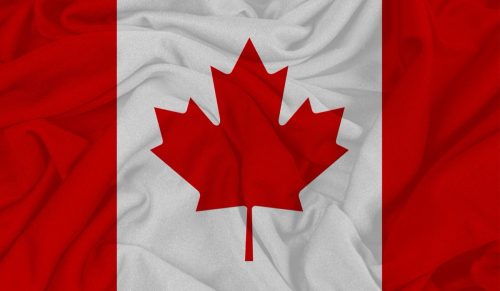
You might've believed Thanksgiving was purely American, but it's celebrated in Canada, too. Instead of the last Thursday in November, however, it falls on the second Monday of every October. The first to be nationally declared was held in 1872 to celebrate the medical recovery of the Prince of Wales. The prince had been suffering from a fever that had "fill[ed] the minds of all loyal subjects with the deepest anxiety," according to The Perth Gazette and West Australian Times. And that's why our neighbors to the north give thanks!
16. The Macy's Thanksgiving Day Parade balloons used to just be let go after the show.

The first large-scale balloon used in the Macy's Thanksgiving Day Parade was Felix the Cat in 1927, replacing the earlier zoo animals that were used in the first three iterations of the parade. Because there were no plans yet for deflating the balloons, most were simply allowed to float away afterward. Unfortunately, this strategy didn't prove very effective, as most popped shortly after being released.
17. Before 1997, there were no size regulations on Macy's Thanksgiving Day Parade balloons.
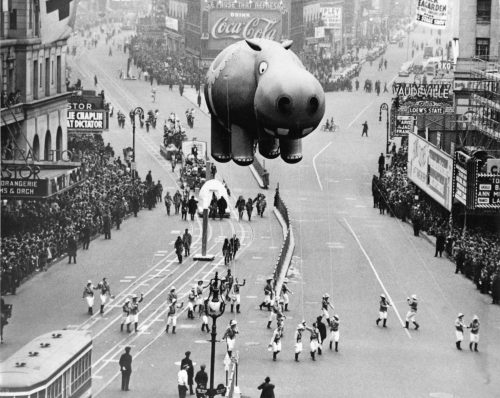
In 1997, the Barney balloon was ripped along its abdomen due to strong winds, while the Pink Panther had to be stabbed by police in order to be stabilized. The worst event occurred, meanwhile, when Cat in the Hat struck a lamppost at 72nd Street and then crumpled to the ground. In response to 1997's calamities, organizers of the parade instituted size regulations that required all balloons to be no larger than 70 feet high, 78 feet long, and 40 feet wide.
RELATED: 65 Fun Christmas Facts to Get You in the Holiday Spirit.
18. About 28 million people watch the Macy's Thanksgiving Day Parade annually.

Approximately 28 million Americans tune in to the Macy's Thanksgiving Day Parade each year. Another 3.5 million people view it in person, and roughly 10,000 participate. And though the parade doesn't begin until 9 a.m. ET, many spectators arrive as early as 6:30 a.m., lining the streets of New York to get a spot along the route.
19. More people travel to Orlando, Florida than anywhere else on Thanksgiving.

According to estimates by AAA, almost 55 million Americans traveled 50 miles or more for Thanksgiving in 2022. The most popular of these destinations—according to booking info—was Orlando, Florida, closely followed by Anaheim, California, then Las Vegas.
20. The original TV dinner was the result of a Thanksgiving miscalculation.

In 1953, an executive at Swanson miscalculated the company's upcoming Thanksgiving turkey sales, leaving the company with some 260 tons of frozen fowl following the holiday. Fortunately for Swanson, a salesman by the name of Gerry Thomas suggested packaging the excess product into trays—along with some traditional sides—and selling them to consumers as TV dinners. Thomas was apparently inspired by the pre-portioned trays used to serve airplane food.
21. More than four-fifths of Americans prefer Thanksgiving leftovers to the meal.
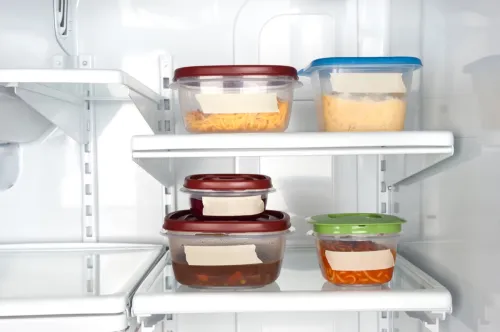
According to a 2021 survey commissioned by Stasher Bags, a large majority of Americans (two-thirds of all participants) prefer the leftovers of the Thanksgiving meal to the meal itself. Another finding: Most people prefer slapping their leftovers into a sandwich to how the food was originally served.
22. Red wine is the most popular Thanksgiving tipple.
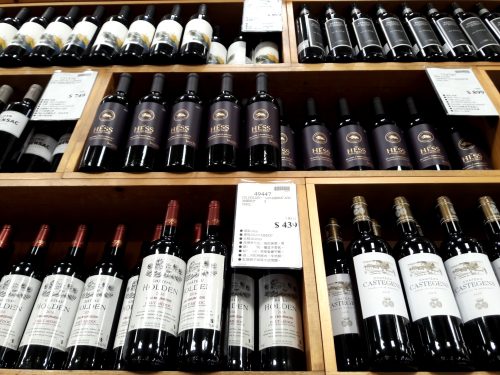
According to a 2017 survey by the alcohol delivery service Drizly, about 50 percent of households serve red wine with Thanksgiving dinner. Only 10 percent go with white. The rest are pouring something else, whether that's soft drinks, beers, or cocktails.
23. The turkey isn't to blame for your post-dinner slump.

A widely accepted myth will have you believe that it's the main dish of the meal that makes you eager for a nap after you eat Thanksgiving dinner. But it's time to stop blaming the turkey and its tryptophan for your sluggishness. Though the amino acid does help your body produce melatonin, which promotes relaxation and sleep, turkey doesn't have any more of it than its poultry brethren. So why the immediate desire to nod off? Because eating a big meal—any big meal—makes you sleepy.
RELATED: 75 Weird Animal Facts Everyone Should Know.
24. One Connecticut town delayed Thanksgiving because of a pumpkin pie shortage.

Well, sort of. Pumpkin pies were mostly popular as a Thanksgiving dessert in New England early in the 18th century, becoming more synonymous with the holiday across the country in the early 20th. But according to History, the town of Colchester in Connecticut agreed to hold the holiday a week when a molasses shortage threatened their ability to make the gourd-based sweet.
25. Holiday weight gain accounts for most of the thickening associated with aging.
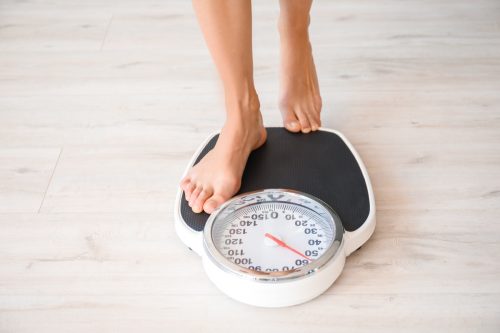
According to a 2000 study published in the New England Journal of Medicine, the average person gains five pounds between the Thanksgiving and Christmas holidays. Coupled with the fact that most individuals tend to gain one pound a year throughout adulthood, this seasonal thickening may play a large part in the general weight gain that accompanies age.
26. Two towns in Texas claim to be the site of the first Thanksgiving.
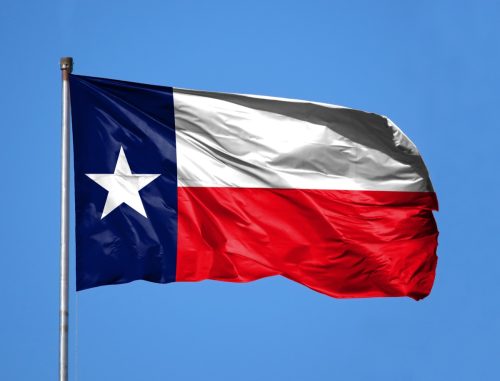
While the "first Thanksgiving" is generally considered to be that aforementioned meal in 1621 in Plymouth, Massachusetts, there are at least two towns in Texas claiming to have been the site of earlier Thanksgiving feasts. El Paso, for one, claims it was host to a day of giving thanks celebrated by the Spanish explorer Juan de Oñate in 1598. The town has been observing that Thanksgiving every April since 1989. Another claim, made by The Texas Society of Daughters of the American Colonists, asserts that the first Thanksgiving was observed by Spanish explorer Francisco Vázquez de Coronado and his expedition in Palo Duro Canyon in 1541. Researchers, however, have since uncovered details to suggest otherwise.
27. The first national Thanksgiving was declared by George Washington.
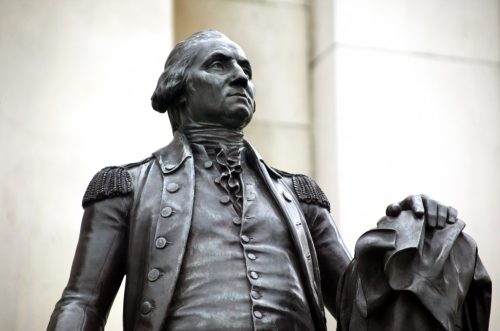
The first national Thanksgiving was declared by President George Washington and was celebrated on Nov. 26, 1789. In his "Thanksgiving Proclamation of 1789" Washington defined the day as a pious time to thank god for, amongst other things, protecting Americans and helping them achieve independence.
28. Turkeys are named after the country—the result of confusion about birds.
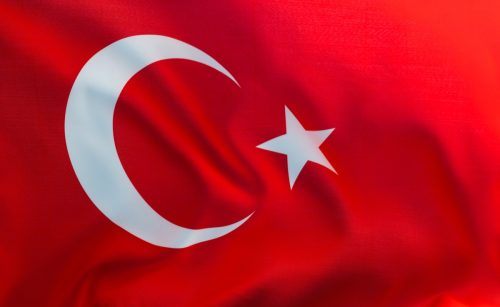
During the time of the Ottoman Empire, guinea fowl—birds that closely resemble turkeys—were often imported from their native North Africa to Europe, to be eaten. Because Europeans received them from Turkish traders, they referred to them as turkey-hens or turkey-cocks. When settlers from the Americas began sending what we call turkeys back to their European counterparts, the latter—confused by the resemblance—began referring to them by the same name. Thus, we have turkeys!
29. Minnesota raises the most turkeys in the U.S.
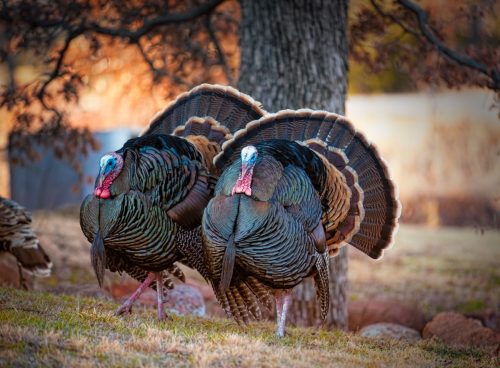
Turkeys apparently prefer cold temperatures and friendly neighbors: Of all U.S. states, Minnesota raised the most turkeys in 2021, according to the USDA. In fact, the 450 turkey farms in the state are responsible for about 18 percent of all turkeys raised and sold in the United States yearly. While Minnesota has perpetually been at the top of the rankings of domestic turkey producers since record-keeping began in 1929, they've remained in the very top spot since North Carolina slowed production in 2003.
30. The first Thanksgiving "football" game predates the National Football League.

According to the Princeton website, on Thanksgiving in 1876, Princeton and Yale students squared off in Hoboken, New Jersey, playing "what would best be described as an 11-on-11 form of rugby." The schools' showdown became an annual one, eventually moving to New York, where 40,000 fans showed up in 1893.
RELATED: 54 Hilarious and Random Facts You'll Want to Tell Your Friends.
31. Benjamin Franklin liked turkeys more than bald eagles.

There's a myth, which is just one of many in American history, that Benjamin Franklin proffered the turkey—a bird he held in much higher esteem than the bald eagle—as a replacement for America's official avian representative. The misconception likely stems from a letter he wrote to his daughter in which he lamented that the "bald eagle…is a bird of bad moral character. He does not get his living honestly…[he] is too lazy to fish for himself," while the turkey is "a much more respectable bird." But that's as far as his turkey fandom went.
32. The tradition of cracking the wishbone is an ancient one.

For some, Thanksgiving dinner isn't complete until the bird's wishbone is snapped, bestowing luck on the bearer of the bigger piece. Would you believe that this custom is thousands of years older than the holiday? Wishing on bird bones traces back to the ancient Etruscans, who used chickens to help them predict the future. After the chickens died, the Etruscans would dry their wishbones—or furcula—in the sun and keep them as good luck charms.
33. Thanksgiving is America's second favorite holiday.

According to a 2015 Harris Poll, Thanksgiving is the second favorite holiday among American adults, behind Christmas and ahead of Halloween for millennials, Gen Xers, and baby boomers. At least we can all agree on that!
34. Thanksgiving is the most popular day in the U.S. for racing.

Runners World reports that Thanksgiving was the most popular holiday to race for much of the 2010s. "In recent years, Turkey Trots have become as synonymous with Thanksgiving as the turkey itself," says Michael Schiferl, EVP of Integrated Media at Weber Shandwick. "In fact, more than one million people participate in upwards of 1,300 races in the United States annually—making Thanksgiving the largest race day of the entire year."
35. Sixty percent of Americans would rather do anything other than think about what they're grateful for on Thanksgiving.
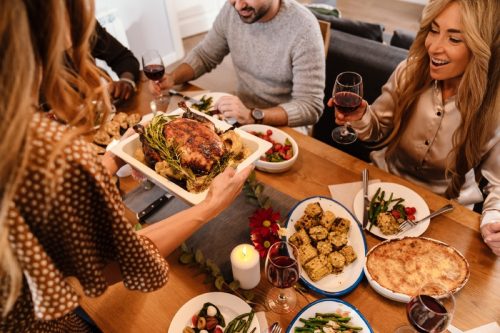
As Amy Morin, LCSW, wrote for Psychology Today, 71 percent of Americans report feeling stress during the holiday season beginning on Thanksgiving. In addition, three in five respondents reported preferring to do something other than think about what they're grateful for during Thanksgiving, including activities such as watching football, reading a book, or playing with a pet. Twelve percent of Americans even stated that they'd rather spend time on their smartphones than have a meaningful conversation with their family.
36. President Abraham Lincoln declared Thanksgiving a national holiday.

There's a lot to thank President Lincoln for, and turning Thanksgiving into an official holiday is definitely up there on the list. On Jul. 15, 1883, Lincoln issued the official Thanksgiving proclamation. It states: "I do therefore invite my fellow citizens in every part of the United States … to set apart and observe the last Thursday of November next, as a day of Thanksgiving." The decision came months after the Union Army defeated the Confederacy in the Battle of Gettysburg, which resulted in more than 50,000 American casualties.
RELATED: 22 Secrets of the One-Dollar Bill.
37. Sonic the Hedgehog was the first video game character to appear in the Macy's Thanksgiving Day Parade.
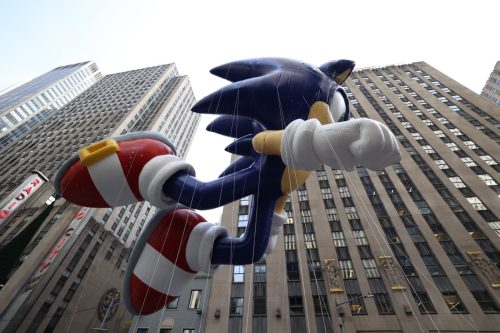
Sonic the Hedgehog was given his biggest platform yet during the 1993 Macy's Thanksgiving Day Parade. The anthropomorphic blue hedgehog debuted as a six-story tall helium balloon during the procession but unfortunately, things didn't go as planned. As the balloon was approaching Broadway, the wind caused it to collide with a corner lamp post. The impact tore the balloon open, causing debris to fall onto the crowd below. An off-duty police officer and a 10-year-old girl sustained minor injuries, but both were released from the hospital that same day. It wasn't until 2001 that another video game character appeared in the parade: Pikachu from the Pokemon franchise.
38. The largest pumpkin pie on record weighed 3,699 lb.

Don't worry, everyone will be able to go back for seconds. And probably thirds. In 2010, the world's largest pumpkin pie was made by the New Bremen Giant Pumpkin Growers and displayed at the New Bremen Pumpkinfest in New Bremen, Ohio. In total, the pie measured 20 feet in diameter. All these years later, it still maintains the title.
39. Giving back makes families closer and happier.

Thanksgiving is, for many, a time not only to be thankful but to give back: witness the countless examples of individuals donating their time to serve or cook Thanksgiving meals for those in need. Did you know, however, that a strong tradition of giving back can set your family up for a lifetime of happiness? According to a poll conducted by Fidelity Charitable, 48 percent of people who grew up "with strong giving traditions" considered themselves to be happy today compared with 33 percent of people who did not grow up with such traditions. It also helps keep families together: 81 percent of those with strong giving traditions reported their core family as being "very close," compared with 71 percent of people without strong giving traditions.
Wrapping Up
That's it for our list of Thanksgiving facts, but be sure to check back in with us soon for even more amazing trivia. And don't forget to sign up for our newsletter to enjoy more holiday tidbits, as well as the latest in travel, wellness, and entertainment.


